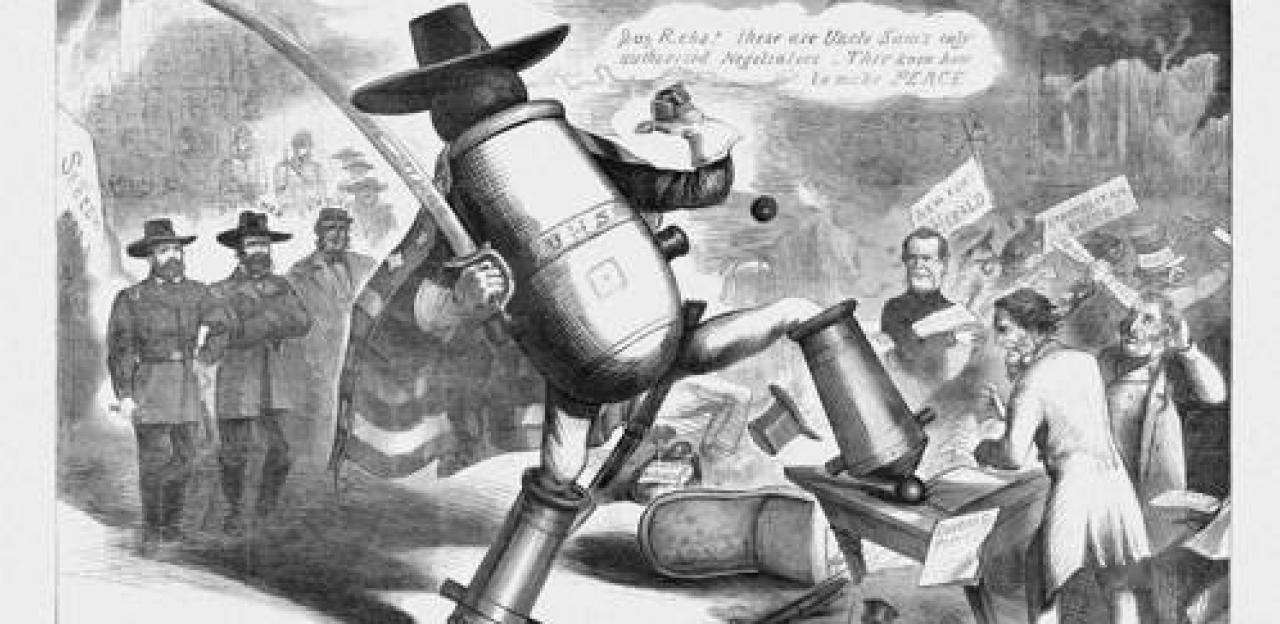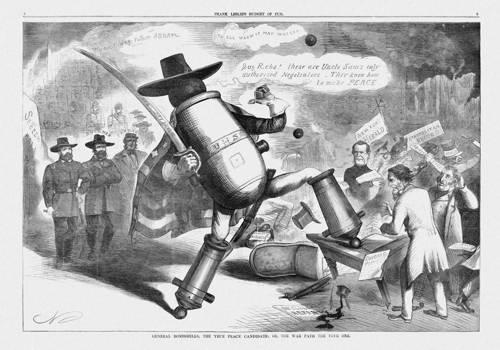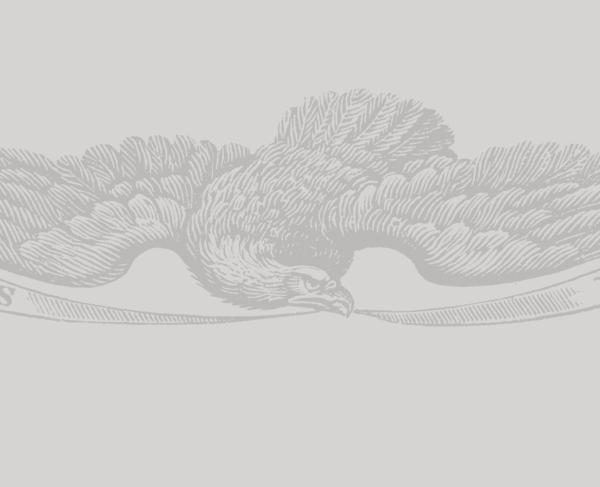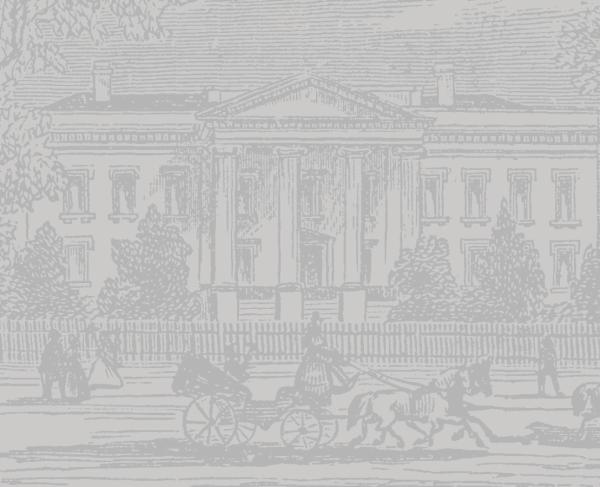General Bombshells, the True Peace Candidate; or, the War Path the True One


At the 1864 Democratic National Convention in Chicago, George B. McClellan was nominated the presidential candidate and the "Chicago Platform," a suggested peace compromise with the Confederacy, was proposed.
Wielding a sword that reads "Right Makes Might," "General Bombshell," the animated cannon at the center of this cartoon, is seen breaking the table at which Confederate President Jefferson Davis stands, and from which hangs the "Chicago Platform." "McClellan's Reports" have fallen to the ground and have been splattered with ink. John Bull, representing Great Britain, Peace Democrat Congressman Fernando Wood, and various members of the northern press watch on in dismay. While pointing to himself, General Bombshell tells his audience, "Say Rebs! these are Uncle Sam's only authorized Negotiators- They know how to make PEACE," while the smoke from the cannon flying through the air above his head reads, "To All whom it may concern." Looking on from behind the animated cannon are, left to right, General Ulysses S. Grant, General William Tecumseh Sherman, and Admiral David Farragut. Approaching Union troops sing "We are coming Father Abram."
Discussion Questions- Make sure to use specific example from the image to support your answers.
1. What important events are occurring at the time of the creation of this cartoon?
2. What does the title of the cartoon tell you?
3. What political statement is the artist trying to make?
4. What elements of the cartoon best make this point?
5. Are there biases or stereotypes? What are they?
6. Who is the audience?
**Frank Leslie's Weekly, known by several different names including Frank Leslie's Budget of Fun, was an American Illustrated literary and news magazine founded in 1852. Running, in some form, until 1922, it provided illustrations and reports on the Civil War, the Spanish-American War, and the First World War. It often took a strong patriotic stance and frequently featured cover pictures of soldiers and heroic battle stories. Over its time in circulation, it employed writers such as Helen R. Martin and H. Irving Hancock, as well as illustrators such as Norman Rockwell and Albert Berghaus.

